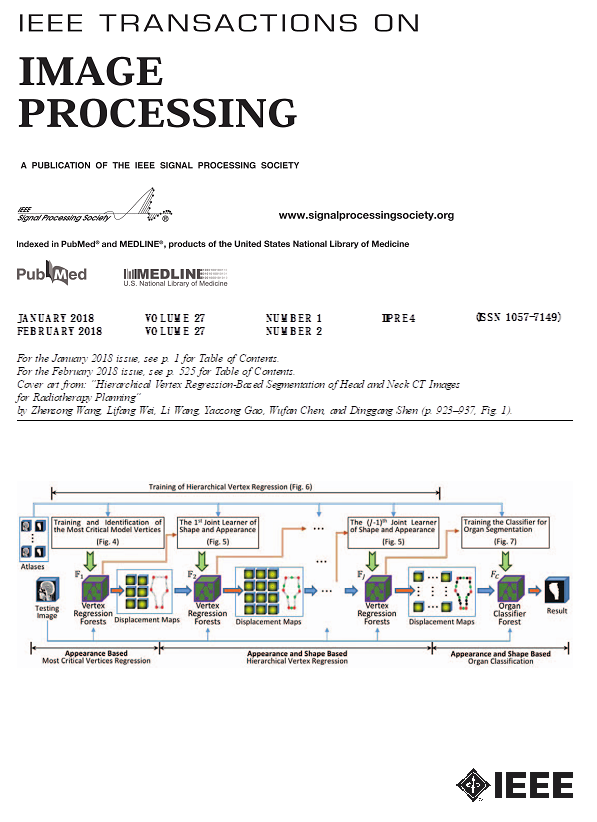Removal of Canvas Patterns in Digital Acquisitions of Paintings
IF 13.7
1区 计算机科学
Q1 COMPUTER SCIENCE, ARTIFICIAL INTELLIGENCE
引用次数: 24
Abstract
We address the removal of canvas artifacts from high-resolution digital photographs and X-ray images of paintings on canvas. Both imaging modalities are common investigative tools in art history and art conservation. Canvas artifacts manifest themselves very differently according to the acquisition modality; they can hamper the visual reading of the painting by art experts, for instance, in preparing a restoration campaign. Computer-aided canvas removal is desirable for restorers when the painting on canvas they are preparing to restore has acquired over the years a much more salient texture. We propose a new algorithm that combines a cartoon-texture decomposition method with adaptive multiscale thresholding in the frequency domain to isolate and suppress the canvas components. To illustrate the strength of the proposed method, we provide various examples, for acquisitions in both imaging modalities, for paintings with different types of canvas and from different periods. The proposed algorithm outperforms previous methods proposed for visual photographs such as morphological component analysis and Wiener filtering and it also works for the digital removal of canvas artifacts in X-ray images.数字绘画收购中画布图案的去除
我们解决了从高分辨率数字照片和画布上绘画的x射线图像中去除画布文物的问题。这两种成像方式都是艺术史和艺术保护中常见的调查工具。根据获取方式的不同,画布工件的表现方式非常不同;例如,在准备修复活动时,它们可能会妨碍艺术专家对画作的视觉解读。当修复者准备修复的画布上的画作多年来已经获得了更加突出的纹理时,计算机辅助画布移除是可取的。我们提出了一种将卡通纹理分解方法与频域自适应多尺度阈值分割相结合的新算法来隔离和抑制画布分量。为了说明所提出的方法的强度,我们提供了各种例子,用于两种成像方式的获取,用于不同类型的画布和不同时期的绘画。所提出的算法优于先前提出的视觉照片方法,如形态成分分析和维纳滤波,它也适用于x射线图像中画布伪影的数字去除。
本文章由计算机程序翻译,如有差异,请以英文原文为准。
求助全文
约1分钟内获得全文
求助全文
来源期刊

IEEE Transactions on Image Processing
工程技术-工程:电子与电气
CiteScore
20.90
自引率
6.60%
发文量
774
审稿时长
7.6 months
期刊介绍:
The IEEE Transactions on Image Processing delves into groundbreaking theories, algorithms, and structures concerning the generation, acquisition, manipulation, transmission, scrutiny, and presentation of images, video, and multidimensional signals across diverse applications. Topics span mathematical, statistical, and perceptual aspects, encompassing modeling, representation, formation, coding, filtering, enhancement, restoration, rendering, halftoning, search, and analysis of images, video, and multidimensional signals. Pertinent applications range from image and video communications to electronic imaging, biomedical imaging, image and video systems, and remote sensing.
 求助内容:
求助内容: 应助结果提醒方式:
应助结果提醒方式:


